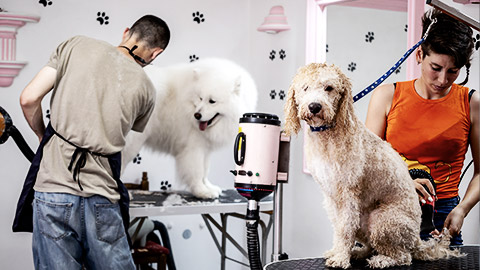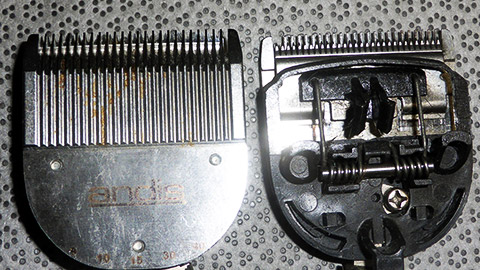In the event you suspect there is a suspicious infectious disease, it will need to be reported. If a disease is detected in the clinic, the veterinarian will need to be notified immediately, and the disease will need to be documented and reported. These reports will need to be carefully completed with information regarding the circumstances around the diagnosis. Certain diseases are immediately reportable to regulatory bodies, often at the time the disease is suspected but still not diagnosed.
When to Report
If the disease is of a highly serious nature, it will then need to be reported to any of the following key personnel:
- the veterinarian
- state or territory’s Department of Primary Industries for Agriculture
- emergency animal diseases.
Every veterinary clinic should have a list of reportable diseases prominently displayed in an area that is easily accessible to clinic personnel, for example, in a treatment room or noticeboard. The Department of Agriculture, Water and Environment provides you with a full list [pdf] of the notifiable diseases of land animals.

You must also understand these diseases will vary between countries and tend to focus on exotic pathogens and those of significant zoonotic concern, such as (but not limited to):
- Rabies
- Hendra virus infection
- Swine influenza
- Avian Influenza
- Avian tuberculosis
- Foot and mouth disease.
These are all diseases that need to be considered when reporting.
What to include:
- Type of pest or disease is suspected
- Description of the clinical signs of the illness, including:
- specific symptoms
- date symptoms were first noticed
- Details of the owner and clinic include:
- Address of both
- Telephone numbers.
- Type or species of animals
- Number of animals in the clinic or owned by the client
- The type of animal affected.
It is important that you make yourself aware of the clinic’s Infection Control Manual, as this should clearly state the required reporting procedures, including contact numbers for the appropriate animal health and/or public health authorities.
In some cases, you or someone who works within the clinic may be bitten or scratched by an animal. In the event this occurs, a booster tetanus shot will need to be administered as per health instruction and will need to be reported.
Fun fact
Did you know? There are about 95 reportable diseases and 6 notifiable diseases of honeybees!

Report suspected cases of disease or illness to the appropriate person. If you suspect that an animal is infectious or showing signs of an infectious disease, you should isolate this animal immediately and report it to your supervisor. Some workplaces may have different protocols as to how you should isolate the animal or how you should report this to your supervisor.
National Framework
Australian Government
The Australian Government, through the Department of Agriculture, Fisheries, and Forestry (DAFF), coordinates national biosecurity and animal health policies. The key components include:
National List of Notifiable Animal Diseases:
- This list includes diseases that must be reported to government authorities. Examples include avian influenza, foot-and-mouth disease, and rabies.
- The list is updated regularly based on emerging disease threats.
Emergency Animal Disease Response Agreement (EADRA):
- A formal agreement between government and industry groups outlining the responsibilities and funding arrangements in the event of an outbreak.
- Ensures a coordinated response to significant disease outbreaks.
Animal Health Australia (AHA)
AHA is a not-for-profit organization that works in partnership with government and industry stakeholders to maintain and improve animal health. Key programs include:
National Animal Health Information System (NAHIS):
- Collects, collates, and analyzes animal health data from various sources to provide a national perspective on animal health status.
- Facilitates early detection and reporting of animal diseases.
Animal Health Surveillance:
- Ongoing surveillance programs to detect and monitor animal diseases.
- Includes targeted surveillance for specific diseases of concern.
State and Territory Framework
Each state and territory has its own legislation and regulatory framework for managing and reporting animal diseases. Common elements include:
List of Notifiable Diseases:
- Each jurisdiction maintains its own list of notifiable diseases, often aligned with the national list.
- Reporting these diseases to the relevant state/territory animal health authority is mandatory.
Veterinary and Livestock Reporting Requirements:
- Veterinarians, livestock owners, and other relevant parties are legally obligated to report suspected cases of notifiable diseases.
- Penalties for non-compliance can include fines and other legal actions.
Response Protocols:
- Established protocols for investigating and responding to reports of notifiable diseases.
- May involve quarantine measures, movement restrictions, and other biosecurity actions to prevent disease spread.
Initial Detection:
- Suspicion of a notifiable disease can arise from clinical signs, laboratory results, or epidemiological links to known outbreaks.
Notification:
- Veterinarians and livestock owners must immediately report suspected cases to the relevant state/territory animal health authority.
- Contact details for reporting are typically available on government websites and through professional networks.
Investigation and Confirmation:
- Authorities will conduct an investigation, which may include on-site inspections, sample collection, and laboratory testing.
- Confirmed cases are reported to national authorities and, where applicable, international bodies such as the World Organisation for Animal Health (WOAH).
Response and Control Measures:
- Implementation of control measures to contain and eradicate the disease.
- May include quarantine, culling, vaccination, and movement controls, depending on the disease and circumstances.
Communication:
- Transparent communication with stakeholders, including the public, industry groups, and international partners.
- Regular updates on the status of the outbreak and measures being taken.

As you will have come to learn, documentation is an integral part of working in the animal care industry. It is highly regulated; therefore, you need to ensure you have knowledge surrounding the documentation you will become exposed to.
Paperwork can be a labour-intensive task that never seems to end; however, paperwork is there for a reason and must be undertaken. In the case of an emergency, there may be a difference between life and death, or in the case of inspection, it may mean accreditation is lost, or fines are issued. Documentation is not a task that should be overlooked; it should be carried out carefully and with a degree of detail.
Let us look at the documentation in closer detail.
Watch
It is important to consider that there are several types of documentation that you will need to become familiar with and may be responsible for. Your organisation will have its own set of documents that are required to be completed at the end of each day, week or as required. Please ensure you check with your supervisor on the documentation you are responsible for.
The following table outlines some of the workplace documents in place in the animal care industry, along with a definition and an example for each.
| Type of documentation | Definition | Example |
|---|---|---|
| Animal health records | Animal health records are similar to a patient card you would have at the doctor's. |
They provide information on
|
| Pet labels | Pet labels are usually placed on the outside of the animal’s housing, cage, or enclosure when they are in boarding or vet/hospital stay overnight. |
The pet labels provide information on:
|
| Chemical register | The chemical register includes information about the types of chemicals that are used at the clinic or facility |
These registers will include:
|
| Diary | The diary keeps records of the appointments that have been booked for the day. The diary should be kept neat and legible as well as being in the same place for accessibility. Usually, a diary would be at the front desk near a phone to record appointment times or changes. |
The diary may include:
|
| Task completion | Depending on the place of work, task completions are a checklist of tasks that need to be carried out daily, weekly or monthly. |
These may include:
|
| Rosters | The roster will depend on the place of work and the availability of staff. Rosters are a way to keep the facility running smoothly and ensure there is enough staff to cover the job requirements of the day. Staff rosters are usually handed out individually and displayed in the common staff area. |
They include the following details:
|
| Timeframe records | ||
| Equipment use, damage and repair register | There is a lot of equipment used in animal care. You must be aware of what you are using and what to do if it is damaged and requires repair. |
|
| Facility damage and repair register | In the event of damage to the facility, there will need to be documentation completed to identify the damage and the process of repair |
Facility and damage repair may appear as:
|
| Incident reports | This type of documentation is one of the most important types of documentation. They are also one of the records that need to be kept for quite a long period. |
Incident reports are used for:
|
| Message recording systems | Most messages will be taken over the phone; therefore, you will need to ensure you have a pen and paper handy if there is no one to take the call. Messages can either be detailed or simple; however, they need to be followed up on regardless of their nature. |
Message recording systems may include:
|
| Stock control records | Stock control records are also of high importance as they keep track of the supplies needed for the facility to operate effectively and safely. Staff need to ensure the stock records are kept up to date and regularly checked so replacement orders can be made. |
Stock control records are usually in the form of:
|
| Safe operating procedures | Safe operating procedures outline the parameters and expectations of employees and legal responsibilities. All staff must be aware of the safety and aware of what they are required to do to keep themselves and others safe. |
Safe operating procedures may include:
|

As you have just read in the table, there are several types of reporting that need to be considered. Your workplace will also have procedures in place for reporting animal welfare concerns. These procedures should be clearly explained to you upon commencing employment, and you will be required to abide by them. There will be a specific type of documentation that will be required for reporting animal welfare incidents, and you will need to ensure you understand how to make the reports in addition to upholding your role in maintaining the animal’s welfare.
You must consider, however, that serious issues such as medical emergencies will require an immediate verbal report to your supervisor, followed up with a written report recounting the incident so it can be filed.
For some issues, the reporting may be as simple as updating a cage card or other document, form, or computer system. One example of simple reporting may be reporting damaging equipment.
Consider the following scenario.

Grooming
Kat and Troy work in the grooming section of Ark De Noah’s Pet Supplies. Kat, the head groomer, and the supervisor have recently carried out additional training with Troy with an emphasis on reporting damaged equipment. Kat has noticed that some of the equipment, such as the clippers, are missing teeth from the blades; however, they have not been removed or tagged. Kat removed these from use and went to retrieve another pair of clippers which had the wires exposed, also not tagged, however, it was put away.
Kat explained to Troy that any type of equipment that may be damaged or cannot be used needs to be tagged and removed from use until it can be replaced or fixed. This can be verbally carried out; however, it will also need to be documented to ensure it is followed up and the equipment can be substituted.
Kat shows Troy where to find the register for documenting damaged equipment and how to fill it out.
The following damaged equipment register is an example of how one of these documents is likely to be filled out. Remember, depending on your facility or clinic, these documents may look slightly different. You must know where to find them and how to fill them out appropriately.
| Date | Type of equipment | Damage description | Action taken | Follow up | Follow up action completion | Comments |
|---|---|---|---|---|---|---|
| 09.04.2024 | Dryer | Motor smoking | Dryer removed | Replace the dryer and check if under warranty | Yes No | The dryer was covered under warranty and replaced by the supplier |
| 10.10.2024 | Clippers |
|
Tagged and removed | Clippers to be replaced | Yes No | Clippers have not yet been replaced; however, they have been ordered |

Updating Records
In line with record protocols, not only will registers need to be regularly reviewed and updated, but there are also parameters around updating the records of the animals in care along with records of staff who are employed. When an animal has received treatment, it may have been a while between vet visits, so the veterinarian will need to check their records to see what issues were recorded before this visit. These documents must be updated as they will need to know any of the following:
- what has happened
- what changes
- What is the long-term plan for the animal, and will this be temporary or permanent medication?
Staff records also undergo updates; this is not limited to the animals. Staff working and living conditions may change, and their records will need to be updated where appropriate. Staff records that are likely to be updated may include:
- name changes if they are married
- changes to their employment contract
- emergency contact details
- address, and so on.

Another fundamental aspect of documentation that you need to consider involves record-keeping. All documentation, whether it has been made for staff or animals, must be kept for a minimum of three years. Records are often very sensitive and must be kept confidential and not shared between other clients. Staff records should also be kept private and confidential and not discussed with other members of the team.
Records such as client medical records and profiles may be uploaded digitally rather than printed and written documents, however many practices continue to use written forms for record-keeping. Documents that are stored digitally must be kept organised, and the device they are stored in must be password protected and backed up should anything go wrong with the computer system.
Written documents must be stored in a cabinet or drawers where staff are the only ones able to access the information, and it, too, must not be discussed with other clients to avoid a breach of privacy. No client should ever have access to these files at any time unless it is related to their own pet/ animal and has been discussed with the veterinarian. In addition, records may require additional intervention, for example, the professional opinion or examination of a specialist vet. In this case, the client must be advised and grant consent to this being shared. The details of the client such as the owner’s address should be kept confidential and not released without their consent.8
Some examples of written record forms are usually in the form of:
- reports
- checklists
- maintenance registers
- prescriptions
- health cards
You must also consider if any records are to be released for any reason, consent from the client and permission sought by the veterinarian, supervisor, or owner of the practice before release.
